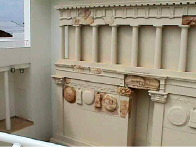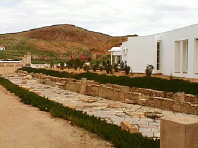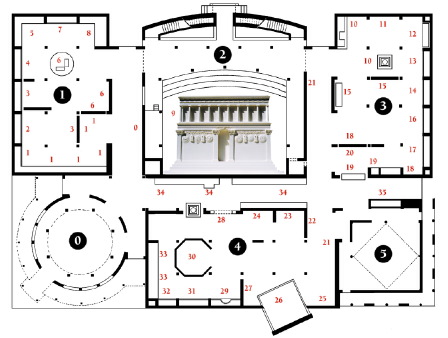 |
|
 |
Three show rooms and a lecture room surround the heart of the museum:
an open air space with the reconstructed façade of the Hellenistic
Altar from the sacred hill, amounting to an exhibition space of 1500 square
metres. A panoramic roof provides a glance both at the Altar below and
at its original position on the hill-top above. This singular monument
was the main find of joint German-Tunisian excavations by Friedrich Rakob
and other German and Tunisian archaeologists between 1965 and 1990. The
open air space with about 200 seats (incl. roof seats) in front of the
monument was also designed by architect J.M. Klessing to serve as an open
air theatre. An additional information room offers a video tour to the
museum's topics. Christoph B. Rüger and Martin Hartmann, archaeological
museologists, designed the museum's core concept and arranged the exhibition
rooms.
|
| An array of excavations and other research results
describe geology, protohistory and part of the Roman period of ancient
Simitthu and its region. The area is still being researched.
Some of the results will soon be documented via this website.
|
 |
